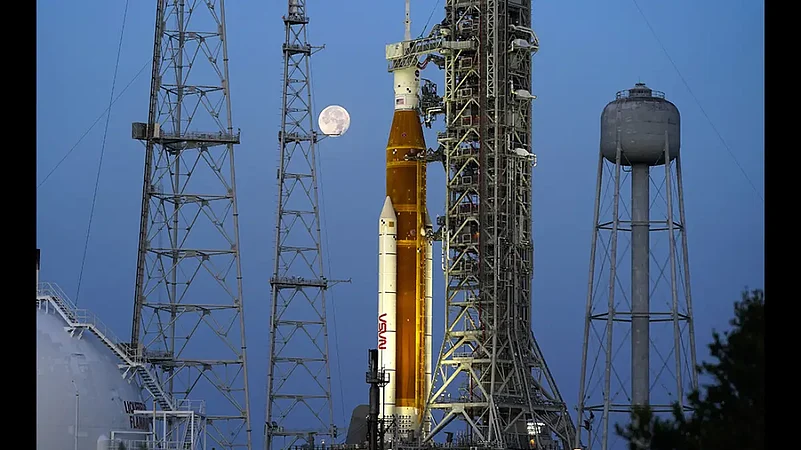The US space agency NASA on Saturday called off the launch of Space Launch Vehicle (SLS), which would have launched Artemis I into space.
The launch was called off as NASA could not fix a hydrogen leak during the fueling of the rocket. The NASA personnel worked to fix the issue for hours but finally recommended the cancellation of the launch and the launch was eventually postponed for the second time this week.
The SLS launch was first called off on Monday after one of the engines of the rocket malfunctioned. Saturday was one of the two launch windows available. The next window would be on Monday, failing which the launch is likely to delayed to October.
Advertisement
Launch director Charlie Blackwell-Thompson and her team tried to plug Saturday's leak the way they did the last time: stopping and restarting the flow of super-cold liquid hydrogen in hopes of removing the gap around a seal in the supply line. They tried that twice, in fact, and also flushed helium through the line. But the leak persisted.
Blackwell-Thompson finally halted the countdown after three to four hours of futile effort. The launch was called off 2 hours 28 minutes before the scheduled lift-off.
The leak was detected early on Saturday when command to put fuel in the rocket were given. The BBC explains: "The problem was traced to the connection where the hydrogen was being pumped into the vehicle. Controllers tried a number of fixes, including allowing the hardware to warm up for short periods, hoping this might reset the seal. But without success."
Advertisement
A leak was also reported on the Monday's aborted launch but a report said that Saturday's leak was not similar to the earlier leak.
The Artemis program is an ambitious space program that would land humans on the Moon for the first time in over five decades. Ultimately, it seeks to make Moon the stepping stone of going to Mars and deep space exploration.
"We will collaborate with commercial and international partners and establish the first long-term presence on the Moon. Then, we will use what we learn on and around the Moon to take the next giant leap: sending the first astronauts to Mars," said NASA.
The NASA will set up a "base camp" on Moon which would allow "robots and astronauts to explore more and conduct more science than ever before".
As for the stated objectives, the NASA said that they are "going back to the Moon for scientific discovery, economic benefits, and inspiration for a new generation of explorers: the Artemis Generation".
Failing on launch on Monday-Tuesday would mean that the launch is likely delayed to October. The Verge explained that there is a 20-day period for launch once the rocket leaves Vehicle Assembly Building (VAB). The 'flight termination system' of the rocket would need to be tested all over again if the 20-day period gets over. If the SLS is not launched by Monday, it would likely go back to VAB for such testing.
Advertisement
"That testing takes time, so if SLS is forced to come back to the VAB after rolling out in August, chances are it wouldn’t be ready to fly until late October," reported The Verge.
(With AP inputs)




















